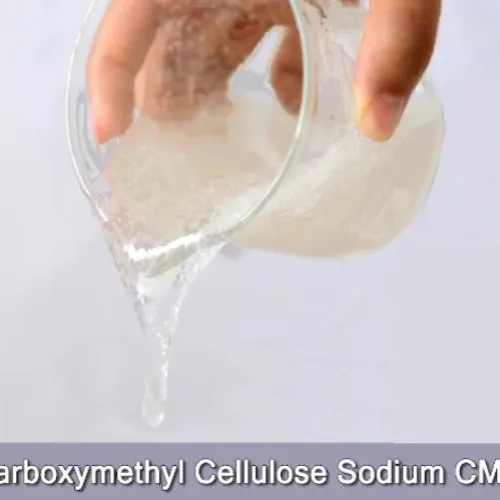Warning: Undefined array key "title" in /home/www/wwwroot/HTML/www.exportstart.com/wp-content/themes/1198/header.php on line 6
Warning: Undefined array key "file" in /home/www/wwwroot/HTML/www.exportstart.com/wp-content/themes/1198/header.php on line 7
Warning: Undefined array key "title" in /home/www/wwwroot/HTML/www.exportstart.com/wp-content/themes/1198/header.php on line 7
Warning: Undefined array key "title" in /home/www/wwwroot/HTML/www.exportstart.com/wp-content/themes/1198/header.php on line 7
- Afrikaans
- Albanian
- Amharic
- Arabic
- Armenian
- Azerbaijani
- Basque
- Belarusian
- Bengali
- Bosnian
- Bulgarian
- Catalan
- Cebuano
- China
- China (Taiwan)
- Corsican
- Croatian
- Czech
- Danish
- Dutch
- English
- Esperanto
- Estonian
- Finnish
- French
- Frisian
- Galician
- Georgian
- German
- Greek
- Gujarati
- Haitian Creole
- hausa
- hawaiian
- Hebrew
- Hindi
- Miao
- Hungarian
- Icelandic
- igbo
- Indonesian
- irish
- Italian
- Japanese
- Javanese
- Kannada
- kazakh
- Khmer
- Rwandese
- Korean
- Kurdish
- Kyrgyz
- Lao
- Latin
- Latvian
- Lithuanian
- Luxembourgish
- Macedonian
- Malgashi
- Malay
- Malayalam
- Maltese
- Maori
- Marathi
- Mongolian
- Myanmar
- Nepali
- Norwegian
- Norwegian
- Occitan
- Pashto
- Persian
- Polish
- Portuguese
- Punjabi
- Romanian
- Russian
- Samoan
- Scottish Gaelic
- Serbian
- Sesotho
- Shona
- Sindhi
- Sinhala
- Slovak
- Slovenian
- Somali
- Spanish
- Sundanese
- Swahili
- Swedish
- Tagalog
- Tajik
- Tamil
- Tatar
- Telugu
- Thai
- Turkish
- Turkmen
- Ukrainian
- Urdu
- Uighur
- Uzbek
- Vietnamese
- Welsh
- Bantu
- Yiddish
- Yoruba
- Zulu
Aug . 09, 2024 02:25 Back to list
Exploring the Properties and Applications of Propylene Glycol in Various Industries and Daily Life
Propylene Glycol An Overview of C3H8O2
Propylene glycol, chemically represented as C3H8O2, is a colorless, odorless, and viscous liquid that is increasingly used across a broad range of industries due to its unique properties and safety profile. This diol, or glycol, is characterized by its two hydroxyl (-OH) groups, which give it the capability to act as a solvent, humectant, and emulsifier. As a result, propylene glycol has become a versatile compound in food, pharmaceuticals, and cosmetics, among other applications.
Chemical and Physical Properties
Propylene glycol is soluble in water, acetone, and chloroform, which enhances its utility in various formulations. Its chemical structure demonstrates its classification as a simple diol. The molecular formula C3H8O2 breaks down into three carbon atoms, eight hydrogen atoms, and two oxygen atoms, making it a relatively small molecule. This simplicity aids in its use as a solvent in numerous products, especially in the formulation of liquid medicines and personal care items.
The boiling point of propylene glycol is around 188.2 degrees Celsius (370.8 degrees Fahrenheit), and it has a low volatility. These properties make it particularly useful in environments where stability is critical. Furthermore, propylene glycol is non-toxic, which allows for its safe application in food and pharmaceuticals, a key distinction from other glycols such as ethylene glycol, which is toxic and potentially lethal to humans and animals.
Applications in Various Industries
1. Food Industry Propylene glycol is commonly recognized as a food additive, designated as E1520 by the European Union. Its primary roles in food products include acting as a humectant to retain moisture, a solvent for flavoring agents, and a preservative. It facilitates the blending of ingredients in a consistent manner, making food products more palatable and longer-lasting. As an additive in baked goods, dairy products, and salad dressings, propylene glycol contributes to product quality and shelf life.
propylene glycol c3h8o2

2. Pharmaceuticals In the pharmaceutical sector, propylene glycol's role is multifaceted. It is utilized as a solvent for drugs, enabling the dissolution of various compounds that are otherwise insoluble in water. Additionally, it is incorporated into topical and oral medications, owing to its ability to enhance absorption and biocompatibility. Propylene glycol's non-toxic nature makes it ideal for use in formulations intended for human consumption.
3. Cosmetics and Personal Care Products The cosmetic industry harnesses propylene glycol for its moisture-retaining properties. It is commonly found in moisturizers, shampoos, and lotions, where it helps maintain hydration in the skin and hair. Its ability to dissolve both oil and water-soluble ingredients allows for the creation of stable emulsions, which are essential in cosmetic formulations.
4. Industrial Applications Beyond food and pharmaceuticals, propylene glycol is also used in antifreeze formulations, de-icing solutions, and as a coolant in industrial systems. Its low toxicity makes it suitable for applications in food processing and areas where accidental contact with food may occur.
Safety and Environmental Impact
Regulatory bodies, including the Food and Drug Administration (FDA) and the Environmental Protection Agency (EPA), have deemed propylene glycol safe for use in food and consumer products. Its low toxicity profile and biodegradability contribute to its favorable reputation. However, like all substances, it should be handled with care to ensure safe usage.
In conclusion, propylene glycol, denoted as C3H8O2, is an exceptionally versatile compound with applications spanning numerous sectors. Its beneficial properties such as solubility, moisture retention, and safety make it an invaluable ingredient in food, pharmaceuticals, cosmetics, and industrial products. As industries continue to evolve and innovate, propylene glycol is likely to maintain a pivotal role in enhancing product quality and safety.
Latest news
-
Certifications for Vegetarian and Xanthan Gum Vegetarian
NewsJun.17,2025
-
Sustainability Trends Reshaping the SLES N70 Market
NewsJun.17,2025
-
Propylene Glycol Use in Vaccines: Balancing Function and Perception
NewsJun.17,2025
-
Petroleum Jelly in Skincare: Balancing Benefits and Backlash
NewsJun.17,2025
-
Energy Price Volatility and Ripple Effect on Caprolactam Markets
NewsJun.17,2025
-
Spectroscopic Techniques for Adipic Acid Molecular Weight
NewsJun.17,2025

